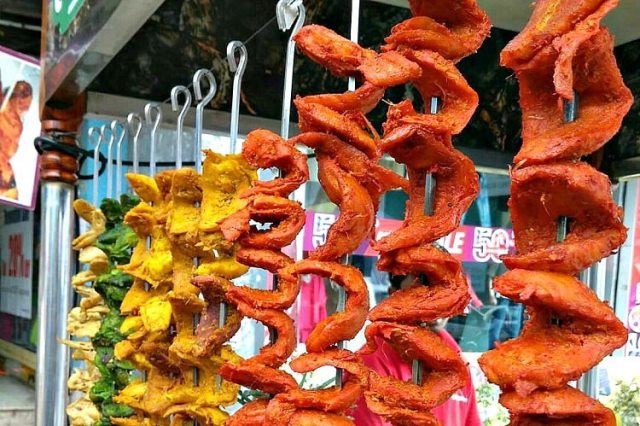
Humanity’s Experiments With Mock Meats
Mock meat, a segment of products that taste, smell and feel very close to their animal counterpart, has become widely popular among people. Millions of dollars are being spent on advertising campaigns to convince us that it is good for us (our health) and good for the planet (for conservation of the environment).
It can’t be denied that raising animals for the table leaves an unbearable carbon footprint and the practice isn’t sustainable. Cattle farming – particularly to produce red meats, beef and pork– contributes to large scale deforestation, exploitation of labour and destruction of the lifestyle of indigenous people.
All this besides the argument that we should not view everything through an anthropomorphic lens and should strive to eliminate cruelty towards animals deserves serious consideration.
The raging debate is not confined to ethical moral issues. Carnivores who love to bite into flesh, fowl or fish ask why can’t the vegetarians not let the meat-eaters be? Why this zeal to convert the non-believers to their creed? Why should vegetarians and vegans be driven to chase the mirage of meats obtained from plants?
The old saying is that call a rose by any other name, it remains a rose. Now, the real problem is that you call plant-based meat by any name-mock meat, faux meat, meat analogue, vegan meat, meat substitute it doesn’t become meat.
There is a long history of humanity’s experiments in this field. The Chinese texts dating back to the third century BCE refer to Tofu made from soyabean as ‘small mutton’. The Chinese also experimented to replicate the texture of meat with gluten derived from wheat. Nor was mimicking meat with vegetables and lentils unknown in ancient India.
Cola-cassia leaves were layered with spice lentil paste and then steamed to mimic fish with skin. Riconch and patod continue to be prepared in different parts of India. Originally, this delicacy was called aleek matsya literally faux fish. Jack fruit, yams and unripe bananas are commonly used to prepare vegetarian kebab, kofta, qorma and biryani. In Bengal, dhokar dalna was prepared with ground Bengal gram lentils and draped in mustard gravy to trick the guest into thinking that they were being treated to fish. These traditional improvisations relied heavily on spices used in non-vegetarian dishes to create the illusion.
However, what is casting a spell at present is mass-produced plant-based proteins that claims to match the appearance, texture and mouthfeel of different viands, poultry and seafood much better.
The process used is Thermo Plastic Extrusion that has been used for almost a century now by cereal manufacturers. It was Mr Kellogg the pioneer of breakfast cereals who had forecast a great future for the humble soyabean as the poor man’s meat. Soya bean granules were marketed as vegetarian keema in India but while the nuggets (soya badi) carved a niche for itself, the mince failed to take off. But we digress.
Mock meats have long ago broken the Soya barrier. As a matter of fact, the Soya Champ so popular in our land is a gluten product! Elsewhere, defatted peanuts or myriad nuts and grains are used as a base for mock meats. To reproduce the texture and taste fungi or egg white are used.
Processed food companies abroad and in India claim that they have succeeded in producing different kinds of meat substitutes that look and taste just like ‘real’ beef, pork, lamb, chicken or seafood. The essentially bland plant protein is transformed magically by the addition of edible colour, fat, aromatic substances and synthetic (nature identical) flavours. This has triggered the debate whether these ultra-processed products are really more healthy than natural meats?
Preservatives are often added that nullify the advantages claimed by producers of vegetarian meats. These may be free from growth hormones and antibiotic medicines but what about high sodium content and preservatives? Packaging and marketing of such niche products make them attractive for the health-conscious and environmentally responsible folks, but it remains to be seen whether this fad of fringe foodies will in future really ensure food security and adequate nutrition for the masses in different continents.
Disclaimer: The views expressed in the above article are that of the writer



